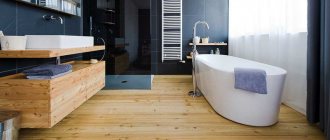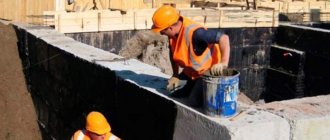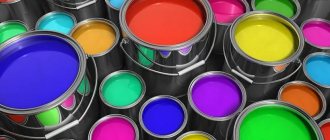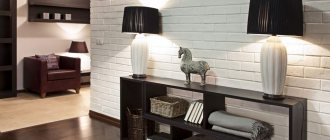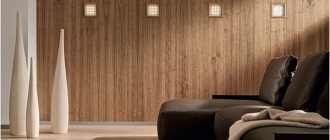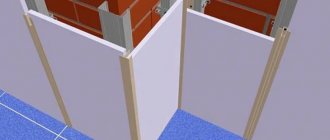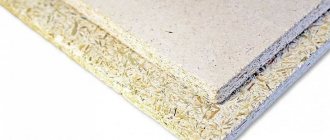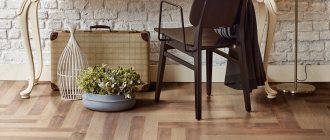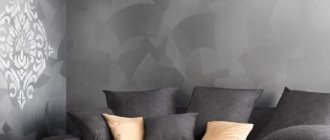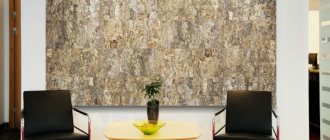In an effort to bring to life the design projects of famous interior artists, you can not only get a unique room design, but also significantly save on the choice of finishing materials. And if you carry out repair work without hiring specialists, but with your own efforts, the savings will be more significant.
3D panels made from young bamboo are not painted, which automatically classifies the building material as highly environmentally friendly
Types of bamboo panels
Brick-like wall panels for interior decoration
The construction market offers consumers various options for decorative bamboo fiber boards, depending on:
- number of layers;
- final destination.
Depending on the number of layers, the following are distinguished:
- Single layer. To install single-layer slabs, you will have to prepare a perfectly or almost flat surface. They are used to decorate furniture and also as a finishing material for the ceiling.
- Plate thickness – no more than 0.1 cm;
- Standard size – 0.6 x 0.6 m.
- Double-layer. Such slabs can be used for minor deformations of the wall surface. Used as finishing materials for ceilings and walls.
- The thickness of the slab does not exceed 0.2 cm;
- Standard dimensions: 0.6 x 0.6 m; 1.9 x 1.0 m; 2.44 x 1.22 m.
- Three-layer. It is acceptable to use for finishing walls and ceilings with larger errors than double-layer panels. They can also be used as cladding for partitions, columns, and furniture facades.
- The thickness of the slab does not exceed 0.3 cm;
- Standard size: 2.44 x 1.22 m.
- Five-layer. Like the previous options, they are used for cladding furniture and walls. It is used extremely rarely as a ceiling finish.
- Plate thickness – varies between 0.4-0.5 cm;
- Standard size: 2.44 x 1.22 m.
- Seven-layer. Due to its sufficient thickness, it is actively used in finishing uneven wall surfaces with depressions and convexities not exceeding 0.4-0.6 cm. Considering the number of layers, seven-layer bamboo slabs have the best sound insulation qualities.
Despite the abundance of possibilities for use (restoration of furniture and room decor), bamboo 3D panels according to their scope of application are divided into ceiling and wall building materials. The average cost of one product varies between 500-2000 rubles. Designer slabs with a unique design and texture will cost from 3000-3500 rubles per piece minimum. The price may slightly decrease or increase depending on the quality of the raw materials.
Mass production of building material produces 3 d bamboo panels in the following sizes:
- square slabs with sides 0.3 and 0.5 m;
- rectangular 3D panels with sides 0.8 by 0.6 m.
Technical characteristics of 3D plates
Advantages of decorative 3D panels
You should choose 3D panels made of bamboo fiber for a number of reasons:
- Long service life. The minimum operational life exceeds 15-20 years;
- Structural strength. Bamboo fibers are very strong and reliable, allowing them to withstand mechanical and physical stress;
- The environmental friendliness of the material from which bamboo panels are made for ceilings and walls. The production of decorative 3D panels does not imply the use of paints and varnishes to impart natural wood shades. The nobility of the raw material does not allow bamboo to be painted in unnatural colors;
- A layer of bamboo panels for the ceiling or walls is an additional sound-proofing and heat-insulating layer. Which in the realities of modern life in megacities is an absolute advantage: no noise from nearby establishments and shops, noise isolation from neighbors, no sounds from the road surface and an additional barrier to car alarms.
Veneered panels
It is worth understanding that bamboo panels are not only a decorative element. Bamboo panels allow you to regulate indoor climate conditions, which is especially important for rooms with humid air (for example, in saunas, baths, in the kitchen or bathroom).
Note. Bamboo absorbs excess moisture from the air, drying it to an acceptable state, which has a positive effect not only on people’s health, but also on the condition of the furniture set.
Bamboo panels for walls in the interior
The instability of bamboo in a humid environment does not allow it to be used for kitchen and bathroom renovations. Bamboo plates decorate the bedroom, living room, children's room, and study. The relief of the panels must be properly illuminated, especially for the 3D variety.
Three-dimensional elements, thanks to a large selection of patterns, are suitable for any interior style. However, often bamboo tiles look too unusual and are used only by modern decors.
The right approach to color and pattern will help you choose panels that will make even the classic style of your home original. This material is often used in eco-style. Floral cladding is suitable for an interior in a minimalist spirit.
Bamboo sheets have even found use in Mediterranean, Scandinavian and Californian styles, despite the fact that such styles require space, light colors and lightness. Bamboo in these styles does not look exotic or alien, but fits organically into the space.
Ethnic style has long been willing to use this material. Panels with different patterns are often used to create an additional play of shapes on the walls. The plates are complemented with fabric, ceramic, stone or wood decoration.
Pressed bamboo wall panels are an environmentally friendly and inexpensive material that will add a touch of originality to your home or office. Easy installation allows you to implement even non-standard ideas in a short time. The main thing is to choose high-quality panels. Such material will last for many years, maintaining the same original appearance throughout its service.
Disadvantages of 3D panels
Soft wall panels
In addition to the advantages of the finishing material, 3D bamboo fiber boards have a number of disadvantages:
- Price. The price per unit of production can vary within several thousand rubles. If we are talking about hand-made production, the cost per unit can increase at least one and a half to two times;
- Installation. Despite the apparent simplicity of assembling a volumetric panel, joining the slabs together will not be easy. If the slab needs to be divided, you cannot do without tools. Using a regular construction knife, slabs can be cut along the grain. So the chance of damaging the stove is extremely small;
- A certain microclimate. With high humidity in the room, bamboo panels may begin to become damp. Dampness is primarily deformation, and subsequently the appearance of fungus and mold. An overly dry climate leads to drying out, and constant exposure to sunlight leads to discoloration.
Therefore, when choosing bamboo 3D panels, you should take into account not only the price segment and visual appeal, but also the conditions in which the bamboo panel will be located.
Bamboo slabs: advantages and disadvantages
Like any material, “natural” panels have a number of pros and cons.
Among the main advantages are:
- Environmental friendliness. The natural origin of the base allows them to be used in the interior of children's rooms. The sheathing will release natural odors into the air, rather than harmful chemical compounds.
- Durability. Bamboo has proven itself to be a very durable plant. The panels are suitable for installation in restaurants, hotels or cafes - in places where there are a lot of people. This material is resistant to minor damage and will last for many years.
- Functionality. Cladding with such tiles is suitable not only for interiors, but also for exterior decoration. If you cover bamboo with a layer of varnish, it will become resistant to moisture or sun. This allows you to use it to decorate a summer house or gazebo.
- Versatility. This plant will look “in its place” in any interior thanks to the variety of textures and methods of painting the slabs. They can be glued on either side, since the front and back sides have the same direction of the pattern.
- Easy to install. The boards are easily attached without outside help. They can be installed on any surface: drywall, concrete, brick walls, wood. Bamboo squares will hide uneven walls, uneven application of putty, and remnants of old wallpaper.
- Save time. Installing bamboo cladding takes little time compared to painting or wallpapering. This is due to the size of the material and the lack of preliminary surface preparation.
- Low price. The cost of bamboo tiles is relatively low, which allows them to be used in large quantities.
The disadvantages of this plant material are related to its structure.
- Fragility. Despite the long service life after installation, the elements can be easily damaged or broken during careless transportation or installation.
- Instability to external factors. Panels that have not been specially treated with protective compounds may be damaged by temperature changes or strong sunlight, and may also absorb surrounding odors.
- Presence of fakes. Low quality material may delaminate over time. You should only buy bamboo sheathing from official suppliers or construction stores.
The advantages of bamboo panels outweigh their disadvantages, but you should carefully select each element of the tile so as not to be disappointed with the renovation.
Interior design options
Unlike completely decorating a room with 3D panels, you can use inserts or assemble a small panel. For example, with bamboo tiles you can lay out an arched passage or window opening from the inside, partially or completely decorate a pillar, finish a niche or bedside podium.
As an alternative to wallpaper, you can use several types of slabs at the same time, visually dividing the space into zones
This method will allow you to favorably emphasize the interior, visually increase the space or level it out. It is possible to combine several finishing materials at once. For example, put a “belt” of bamboo panels along the bottom of the wall, and cover the top with paint or use wallpaper.
Examples
So that you can get a general idea of how bamboo wall panels look in the interior, below are several photos of examples of such finishing. Based on the illustrations provided, you can form your own opinion about this finish and decide whether this material is suitable for you personally.
Installation recommendations
Regardless of the choice of finishing material, the surface on which it will be attached must be treated. Namely:
- level to the highest possible level of smoothness;
- get rid of chips, pits and cracks using putty;
- cleaning from dust and dirt.
When installing slabs, you can use mechanical clamps or place the slabs on an adhesive base - locking grooves alone are not enough. You can use glue special for attaching wooden tiles, glue-moment or glue for baseboards.
To get into the grooves and get better adhesion to the adhesive base or mechanical fasteners, you can use a hammer with a rubber tip
The final stage is surface varnishing. If the slabs are not varnished, it is worth varnishing the surface, if only because this will avoid premature destruction of the slab, drying out or deformation in a humid microclimate.
Installation work
As for installation, there is a certain sequence that is no different from working with other panels. It is as follows:
- Preparatory stage. This involves cutting or adjusting the size of the sheet to suit the size of the surface.
- Preparing the walls. Removing old finishing material, cleaning from dirt and dust.
- Choice of fastening technology (adhesive or mechanical fasteners).
- Installation of bamboo panels.
- The final finishing of the finished coating is varnishing.
There are some features of the work. For example, installing bamboo on wooden walls is done using nails or self-tapping screws. When working with furniture paneling, use construction staples or furniture nails. To fix the sheets on a concrete or brick base, you need to use special glue or liquid nails.
Advice! When forming elements, it is important to wear protective gloves to protect yourself from cuts and splinters. To hide joints and wide seams, separate elements of bamboo, slats, bamboo moldings or decorative rope are used.
If desired, the surface can be painted. For this it is better to use a spray gun. Then the paint and varnish material will penetrate into all hard-to-reach places and lay down in an even layer. If you can’t get a spray gun, use a microfiber paint roller. These recommendations will help you perform the installation correctly. Thanks to this, the finish will look beautiful and be durable.
